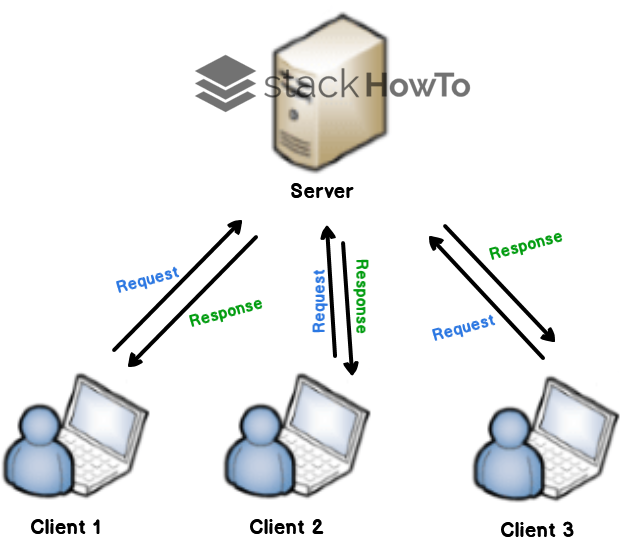Types of Client-Server Architecture with Example
In this tutorial, we are going to see types of client-server architecture with example.
A client-server architecture represents the environment in which the client machine applications communicate with the server machine applications.
The classic example is the Web browser of a client who asks (“request”) the contents of a Web page to a Web server which returns the result to him (“answer”).

Types of Client-Server Architecture
If all the necessary resources are present on a single server, this is called a two-tier or 2-tier architecture (1 client + 1 server).

If some resources are present on a second server (e.g. databases), this is called a three-tier or 3-tier architecture (1 client requests the first server, which itself requests the second server).

Beyond 3 participants, this is called an n-tier architecture.
Advantages of the Client/server Architecture
The client/server model is particularly recommended for networks requiring a high level of reliability, its main advantages are
- Centralized resources: since the server is at the center of the network, it can manage resources that are common to all users, such as a centralized database, in order to avoid redundancy and duplication problems
- Better security: because there are fewer entry points for accessing data
- Server level administration: since clients have little importance in this model, they need to be administered less
- Scalable network: thanks to this architecture it is possible to remove or add clients without disrupting the network and without major modifications
Disadvantages of the Client/server Architecture
The client/server architecture has some disadvantages such as:
- High cost due to the technical nature of the server.
- Weak element: the server is the only weak element in the client/server network since the entire network is built around it! Fortunately, the server has a high fault tolerance (thanks to the RAID system)
Difference between Client/server Architecture and Peer-to-peer:

In a peer-to-peer architecture, unlike a client/server network architecture, there is no dedicated server. So each computer in such a network is both server and client. This means that each computer in the network is free to share its resources. A computer connected to a printer may share it so that all other computers can access it via the network.






